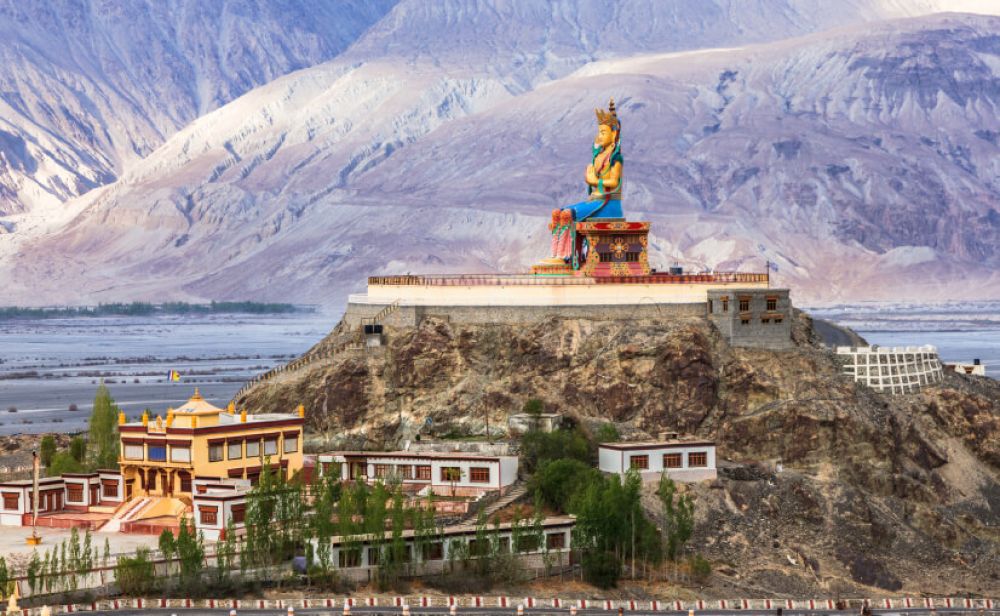

Ladakh, the land of high passes, has been mesmerizing travelers with its stark beauty and unique culture for decades. Situated in the Nubra Valley of this region is the magnificent Maitreya Buddha Statue, which has become a symbol of peace and spirituality, drawing tourists from around the world.
Tourism in Ladakh has witnessed a gradual yet significant evolution. Initially, the area was known only to the most adventurous travelers, monks, and traders who braved the harsh terrain. It started gaining popularity in the 1970s when borders were opened to tourists, allowing the world to witness its unspoiled landscapes and vibrant Buddhist culture.
The introduction of reliable roadways, development of local infrastructure, and enhancements in communication have played a pivotal role in boosting tourism in Ladakh. It was also after the 1974 establishment of the Leh-Ladakh Tourism Development Cooperative that professional marketing of Ladakh’s tourism began.
The 32-meter tall Maitreya Buddha Statue is located near the Diskit Monastery in Nubra Valley. It was consecrated by His Holiness the Dalai Lama in 2010. Maitreya, in Buddhist tradition, is the future Buddha who will appear on Earth, achieve complete enlightenment, and teach the pure dharma. The Statue symbolizes the aspiration for peace and protection from war and natural calamities.
Travelers to the Maitreya Buddha statue can enjoy the serene atmosphere and panoramic views of the Nubra Valley. With picturesque landscapes that change colors with the seasons, it offers a spiritual retreat as well as a photographer’s haven. The statue itself is an impressive sight, towering over the landscape, and embodying the region's deep spiritual roots.
In recent years, Ladakh has seen a surge in popularity, particularly with the rise of eco-friendly and sustainable tourism practices. This involves the promotion of homestays, increased awareness about preserving the natural and cultural heritage, and the concept of 'take nothing but pictures, leave nothing but footprints' among travelers.
Adventure tourism is also gaining traction, with activities like trekking, mountain biking, and river rafting becoming highly sought after. Ladakh’s tourism industry continues to innovate, ensuring that the region remains one of India's top tourist destinations.
Reaching the Maitreya Buddha statue requires crossing high-altitude passes and is most commonly done via Leh. During the tourist season, which typically runs from June to September, the region becomes accessible by road via the Srinagar-Leh highway or the Manali-Leh highway. For the rest of the year, flights to Leh are the primary means of access, weather permitting.
Note: Visitors are encouraged to acclimatize to the high altitude before venturing into the Nubra Valley to prevent altitude sickness.
The Maitreya Buddha Statue in Nubra Valley is not just a testament to Buddhist faith but a beacon for tourists seeking a blend of spiritual awakening and natural beauty. As Ladakh continues to flourish in its tourism endeavors, the Maitreya Buddha waits with its silent embrace to offer blessings to those who make the journey to this extraordinary destination.